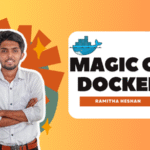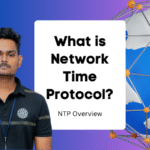CoDeKu DevOps Academy Blog - DevOps & Cloud Blogging Platform
Are you ready to start your career as a DevOps engineer in 2025 and looking for practical guidance? You’re in the right place.
With 6 years in software engineering and 5 years in DevOps, I now work as an Associate Architect at KodeKloud, helping DevOps professionals. DevOps is a rewarding tech field focused on more than just tools—it breaks barriers between development and operations to deliver better software faster.
Let’s clear something up: DevOps isn’t just about automating tasks, though many people think it is. Sure, knowing how to automate things is important, but it’s not the whole story. Real DevOps is about how teams work together, share responsibilities, and keep learning from each other. Think of automation as one of your tools – useful, but not the only thing that makes you a DevOps engineer.
Tip: Who Can Become a DevOps Engineer?
Good news! You don’t need to be a developer or system engineer to work in DevOps. If you already work in IT – as a developer, system admin, tester, or support person – you’re on the right track. What matters most is your interest in:
- Learning new tech
- Making work processes better
- Working well with others
That’s all you need to start your DevOps journey!
Ready to begin? Let’s follow the path together and uncover the key concepts and skills that will set you up for success in DevOps!
Table of Contents
- Understanding the DevOps Engineer Role: More Than Just Automation
- Starting Your DevOps Journey: A Clear Roadmap
- STEP 1: Get Comfortable with Linux
- STEP 2: Understand How Infrastructure Works
- STEP 3: Master Cloud & Infrastructure Automation
- STEP 4: Learn Container Orchestration & Distributed Systems
- STEP 5: Logging, Monitoring & Observability
- STEP 6: Get Hands-On with Programming & Scripting
- STEP 7: Master Git, GitOps & Documentation
- STEP 8: Understand the End-to-End Application Delivery Process
- STEP 9: Make Your DevOps Journey Secure (DevSecOps)
- Must Have Skills Checklist
- Understanding the DevOps Engineer Interview Process
- Final Thoughts: Advice From a DevOps Frontlines
Understanding the DevOps Engineer Role: More Than Just Automation
DevOps Engineers are vital in connecting development and operations teams to make software delivery faster, smoother, and more reliable. While automation is a big part of their work—reducing repetitive tasks and saving time—DevOps is also about teamwork, collaboration, and problem-solving. Their responsibilities focus on automating workflows, maintaining infrastructure, and ensuring system reliability and scalability.
Key Responsibilities of a DevOps Engineer:
- Managing Infrastructure: Setting up and maintaining the systems and tools needed for software development and deployment.
- Automating Processes: Building and maintaining CI/CD pipelines to automate software testing, deployment, and updates.
- Monitoring and Troubleshooting: Keeping track of system performance, identifying issues, and resolving them quickly.
- Collaboration: Working closely with developers, testers, and operations teams to improve workflows and the overall software lifecycle.
- Ensuring Reliability: Making systems scalable and stable to handle growth and prevent downtime.
- On-Call Support: Participating in production support to fix urgent issues and maintain uptime.
Working Together for Better Software Delivery – DevOps vs SRE
DevOps and Site Reliability Engineering (SRE) are closely related but serve different purposes. DevOps focuses on fostering collaboration between development and operations teams to speed up software delivery. It helps teams work together more effectively, breaking down silos and improving workflows.
SRE, on the other hand, builds on DevOps by applying engineering practices to ensure that systems are not only delivered quickly but also remain reliable and performant. While DevOps focuses on fast delivery, SRE emphasizes maintaining stability and reliability, enhancing both efficiency and performance.
Starting Your DevOps Journey: A Clear Roadmap
DevOps is about how people work together. Think of it as a team sport where everyone plays their part to win together. Let me explain what makes DevOps culture special:
Understanding DevOps Culture: A Key Step
- Teams work together instead of blaming each other
- Everyone helps solve problems, even if it’s “not their job”
- Sharing knowledge is key – no keeping secrets!
- Mistakes are seen as chances to learn, not reasons to point fingers
Before You Jump In
Start with these basic building blocks:
- Learn how computers work (Operating Systems)
- Understand how computers talk to each other (Networking)
- Pick up some coding skills (Programming)
With that understanding, let’s move on and explore the roadmap, starting with the key skills and tools you’ll need to master.
STEP 1: Get Comfortable with Linux
Linux is central to modern IT, especially in cloud computing. Knowing Linux and its versions like RHEL, CentOS, Ubuntu, and CoreOS is crucial for DevOps engineers. Most cloud workloads run on Linux, making this knowledge essential.
In Linux, using the terminal is important since graphical interfaces are less common. To begin, set up Linux environments with tools like VirtualBox and Vagrant or use cloud platforms like AWS, GCP, or Azure.
Roadmap for Linux:
- Learn the Basics: Understand the Linux boot process, systemd, and how processes work.
- Work with Web Servers:Install and configure servers like Apache, Nginx, and Tomcat to learn web server functionality.
- Networking Essentials: Explore HTTP proxies, SSH, and key protocols like SSL, TLS, TCP, UDP, FTP, and SFTP.
- File Systems and Volumes: Familiarize yourself with Linux file systems, volumes, and data management.
- Logging and Troubleshooting: Dive into system logs, monitoring tools, and troubleshooting practices.
- Service Management: Learn to manage Linux services and create your own with Initd or Systemd.
- Website Hosting: Host static or dynamic websites and experiment with server configurations.
- Load Balancing and Proxies: Set up load balancers and reverse proxies like Nginx or HAProxy, and understand their configurations.
- Performance Optimization: Tune Linux systems for optimal performance.
- Database Management: Set up and manage databases like PostgreSQL and learn their configurations.
To truly understand Linux, purposely break things and fix them, as in real-world projects, you’ll often need to manage systems without easy access to the internet.
STEP 2: Understand How Infrastructure Works
Infrastructure: The basic systems and services that support an organization’s IT environment, such as servers, networks, data centers, and cloud platforms. It forms the foundation for everything, whether on-site or in the cloud.
Understanding infrastructure helps DevOps professionals troubleshoot, collaborate with network and security teams, and resolve issues effectively.
Key Topics to Cover:
Storage
- SAN, Backups, NFS, Object Storage
- Disk Performance (IOPS, Throughput, Latency)
- Databases & Key-Value Stores
High Availability
- Clusters, Failover, Disaster Recovery
- Vertical & Horizontal Scaling
Single Sign-On (SSO)
- Active Directory/LDAP, SAML Authentication
Security
- SSL, PKI, Zero-Trust, Password Rotation
- Compliance Standards, VPNs
Load Balancers
- L4 & L7 Load Balancers
- Balancing Algorithms, Reverse Proxy
STEP 3: Master Cloud & Infrastructure Automation
In today’s DevOps world, cloud computing and automation go hand-in-hand. Let’s explore how they work together:
Getting Started with Cloud
- Begin with VirtualBox and Vagrant to learn basics
- Focus on one major cloud platform: AWS (recommended), GCP, or Azure
- Get certified in your chosen platform
- Watch cloud conference videos (AWS re:Invent, Google Next) for real tips
Making Everything Automatic
Modern DevOps means automating wherever possible. Here’s what you need:
Key Tools to Learn:
For Development:
- Vagrant or Docker Desktop
- Minikube or Kind for local Kubernetes
For Building Infrastructure:
- Terraform (most popular)
- CloudFormation (if using AWS)
For Managing Configs:
- Start with Ansible
- Later explore Chef or Puppet
For Containers:
- Docker
- HashiCorp Packer
Quick Tips:
- Learn things manually first, then automate (like setting up Nginx)
- Practice with test tools like Ansible-Test or Terratest
- Use community modules and resources to learn faster
- Test everything you automate
- Keep practicing with hands-on projects
Remember: Modern servers are never modified – they’re replaced entirely when updates are needed. This is called “immutable infrastructure,” and it’s why automation is so important.
STEP 4: Learn Container Orchestration & Distributed Systems
Think of modern applications like a smart restaurant chain: Containers are like perfectly packed meal kits that can be cooked anywhere (your code + tools), while distributed systems are like having multiple restaurant locations working together – if one gets too busy, others help handle the load.
Master Container Basics
- Start with Docker or Podman basics
- Move to Kubernetes for managing many containers
- Get certified: Choose CKA, CKAD, or CKS
Begin Your Kubernetes Journey! 🚀
Want to master Kubernetes? Check out my beginner-friendly course that breaks down complex concepts into easy steps. Perfect for DevOps engineers starting their container orchestration journey.
Click Here: Kubernetes From 10,000 Feet
Explore Distributed Systems
- Learn how modern tools work together
- Focus on microservices architecture
- Explore Service Meshes for advanced control
- Check out CNCF tools for the next steps
Quick Tip:
Start with basic containers, then grow into Kubernetes. Once comfortable, dive into distributed systems and service meshes. This path will help you manage modern applications effectively.
STEP 5: Logging, Monitoring & Observability
Logging, monitoring, and observability are key to managing infrastructure. Applications produce logs and metrics, which are stored in systems like Splunk, ELK, or Loggly. These logs help teams in development, operations, and security monitor, troubleshoot, and audit both applications and infrastructure.
Monitoring tools like Prometheus and Nagios (for open-source) or Datadog and AppDynamics (for enterprise) are used to track critical applications. They display metrics and logs on dashboards for 24/7 monitoring.
Alerts are set up based on monitoring rules, notifying teams through channels like Slack or Jira when issues occur. As a DevOps engineer, you need to be able to query logs and troubleshoot issues, both in development and production environments. Understanding regular expressions is helpful for efficient log searching across different tools.
STEP 6: Get Hands-On with Programming & Scripting
In today’s world, everything is treated as code—from pipelines to infrastructure. Learning programming allows you to automate workflows, customize tools, and stay relevant in the evolving DevOps landscape. Real-world examples include Jenkins pipelines requiring Groovy scripting, Ansible custom modules using Python, and Kubernetes operators built with Golang.
Therefore scripting is a must-have skill for DevOps engineers. Here’s what you need to focus on:
Programming Languages to Learn:
- Bash/Shell: For automating basic tasks and scripting workflows.
- Python:Widely used for automation, building Ansible modules, and working with APIs.
- Golang: Popular in the DevOps world, especially for creating Kubernetes operators, Terraform, and other tools.
Why Learn Programming?
- Collaboration with Developers: Understanding programming helps you work better with developers, troubleshoot issues, and engage in meaningful conversations.
- Building Applications: Create a small application (e.g., API) from scratch to understand development processes, components, and workflows.
- Infrastructure as Code (IaC): Tools like AWS CDK and Pulumi use programming languages to define infrastructure, enabling test-driven infrastructure development.
- Custom Automation: Sometimes, tools don’t provide all the functionality you need. Scripting allows you to add custom features.
STEP 7: Master Git, GitOps & Documentation
As part of your DevOps journey, here’s what I recommend focusing on:
1. Learn Git: Version control everything, except passwords and secrets. Git is the best tool for this, and you can quickly get the hang of it with the many tutorials available. Use GitHub or Bitbucket for hosting your repositories, and make sure to understand Git branching strategies for smoother releases.
2. Explore GitOps: GitOps is an emerging practice focused on Continuous Deployment for cloud-native applications, using tools like Git. While it’s not mainstream yet, it’s set to grow. ArgoCD is a great tool to start learning GitOps in action.
3. Document Everything: Document your work, especially with a README in every repository. Clear documentation helps both you and others understand the code better and makes collaboration easier.
STEP 8: Understand the End-to-End Application Delivery Process
Three key concepts of the application delivery lifecycle:
- Continuous Integration (CI): Regularly merging code changes into a shared repository to ensure that new code works well with existing code, often through automated builds and tests.
- Continuous Delivery (CD): Automating the delivery of applications to a testing or production environment, ensuring that code can be released at any time with minimal manual intervention.
- Continuous Deployment: A step beyond continuous delivery, where every change that passes automated testing is automatically deployed to production without any manual approval.
It’s important to get hands-on experience with popular CI/CD tools.
For Continuous Integration (CI), try tools like Jenkins, GitHub Actions, Drone CI, and Travis CI. These tools help automate the process of integrating and testing code changes.
For Continuous Delivery (CD), focus on tools like ArgoCD, FluxCD, Jenkins X, and GoCD. These tools automate the deployment process, making it easier to deliver applications to testing or production environments.
Breaking down the application development and release lifecycle into the following areas and understanding their roles will help you build a solid foundation for your journey.
Key Areas to Focus:
- Planning and Requirement Gathering: Starting with clear goals and understanding the scope of the project.
- Architectural Approval: Getting sign-off from enterprise architects to ensure the design meets requirements.
- Security Reviews: Adhering to legal and regulatory standards for data handling.
- Data Compliance: Familiarize yourself with Linux file systems, volumes, and data management.
- Configuration and Secret Management: Keeping sensitive data and environment settings secure.
- Quality Assurance & Performance Testing: Verifying that the application meets quality standards and performs well.
- Monitoring KPIs: Setting up key performance indicators and documenting them for ongoing tracking.
- Change Management: Effectively managing and tracking changes in the project lifecycle.
- Release and Deployment: Deploying the application into production while following a clear release process.
- Post-Release Validation: Ensuring everything works as expected after release.
- Rollback Planning: Having strategies in place for quickly reverting to a previous version if needed.
STEP 9: Make Your DevOps Journey Secure (DevSecOps)
To ensure secure software development as part of a DevOps engineer’s roadmap, organizations must adopt key DevSecOps practices. The core security practices include.
1. Standardize & Automate
- Set strict permission boundaries (Principle of Least Privilege)
- Control access with Identity Management (IAM)
- Use container isolation for microservices
- Enable end-to-end encryption (TLS/SSL)
2. Shift-Left Security
- Move security to early development stages
- Build security into the design phase
- Prevent vulnerabilities before deployment
- Use automated security checks
3. Secure CI/CD Pipeline
- Run container scanners (like Trivy, Clair)
- Use SAST tools for code analysis
- Perform DAST for runtime testing
- Automate dependency updates
- Check container images before the registry push
Essential Security Tools & Concepts
- Implement Zero Trust Architecture
- Use Hashicorp Vault for secrets
- Deploy API gateways with security filters
- Enable RBAC (Role-Based Access Control)
- Monitor with SIEM tools
Tip:
Integrate security scans into your pipeline so vulnerabilities are caught automatically. Tools like SonarQube, OWASP ZAP, and Snyk can help catch issues early.
Remember: Security automation is key – manual security checks don’t scale in DevOps!
After mastering the core concepts and tools in the roadmap, a successful DevOps engineer needs a solid foundation in several key areas. Think of these skills as your DevOps toolkit – each one helps you solve different challenges in the modern software delivery landscape.
Must-Have Skills Checklist:
Core Technical Skills
- Programming & Scripting
- Operating System Concepts
- Networking Fundamentals
- Version Control (Git)
Modern Infrastructure
- Distributed Systems
- Container Technologies
- Infrastructure Automation
- Configuration Management
Pipeline & Process
- CI/CD Tools (Jenkins, GitLab CI, GitHub Actions)
- Monitoring & Logging
- Troubleshooting
- Documentation
Understanding the DevOps Engineer Interview Process
With over 10 years of experience in the industry, I’ve been part of many DevOps engineer interviews, which vary based on company needs.
- Core IT Fundamentals vs. Tool Knowledge: Established product companies prioritize strong IT fundamentals over specific tool knowledge, focusing on core infrastructure and automation concepts.
- Service-Based Companies and Certifications: Service-based companies value certifications and tool knowledge, such as AWS experience, especially for project-specific requirements.
- Coding and Scripting Skills: Most interviews include rounds to assess your coding or scripting skills, focusing on problem-solving and automation tasks.
- Practical Assignments: Some companies assign tasks to design infrastructure automation or set up CI/CD pipelines, testing real-world implementation skills.
In summary, DevOps interviews vary but generally assess a mix of technical knowledge, practical skills, and tool-specific expertise.
Final Thoughts: Advice From a DevOps Frontlines
As we wrap up this guide, let me share some key insights that have shaped my DevOps journey and could transform yours.
Embrace Continuous Learning & Community
The most successful DevOps professionals are perpetual learners. Read engineering blogs from tech giants like Netflix and Google daily – their insights into toolsets and deployment strategies are invaluable. Connect with the DevOps community on LinkedIn, Reddit, and Medium. Remember, in DevOps, we learn not just from documentation, but from each other’s experiences.
Share & Build Your Identity
Document your learning journey through blogs or GitHub documentation. This not only helps others but builds your professional brand. Even a simple blog can lead to years of professional growth.
The Road Ahead
While this roadmap covers common tools and technologies, remember that strong IT fundamentals are crucial. Don’t wait for opportunities; create them using free cloud credits for real-world projects. The DevOps landscape is vast and ever-evolving, and your journey starts now.
What’s your biggest takeaway from this guide? Share your thoughts below – I’d love to hear about your DevOps journey and trust me, it’s going to be an exciting one..!!!





